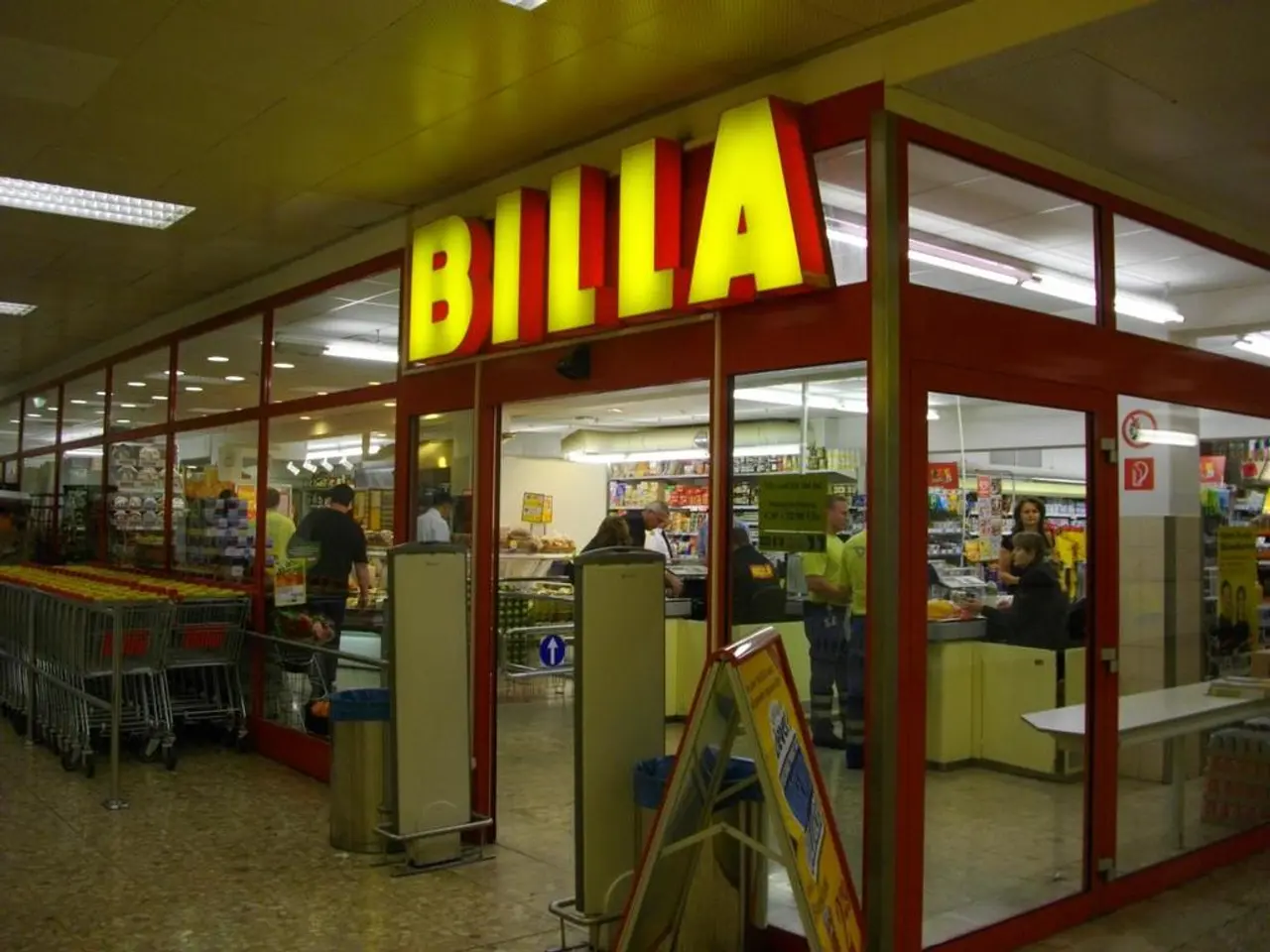Transforming Warehouse Logistics: Journey from Traditional Methods to Eco-friendly IoT - Revamping Sustainable Supply Chains through Technology Innovation
In the rapidly evolving landscape of logistics, modern warehouses are transforming into living, intelligent ecosystems. This transformation is driven by the integration of Internet of Things (IoT) technology, machine learning, and advanced wireless standards.
One of the key players in this revolution is Walmart, which has integrated IoT with machine learning in its distribution centres to fine-tune HVAC and lighting systems, with sustainability as a core goal.
The logistics industry is moving towards a multi-modal approach, integrating both legacy and forward-looking technologies to achieve operational goals. This approach emphasizes sustainability in infrastructure design.
Beyond traditional wireless standards like Zigbee and Z-Wave, popular wireless standards currently used for IoT in smart logistics operations include Bluetooth Low Energy (BLE 5.0/5.1), LoRaWAN, Ultra-Wideband (UWB), and Private 5G and Wi-Fi 6.
Bluetooth Low Energy (BLE 5.0/5.1) is extensively used for indoor positioning, smart beacons, and mobile app integrations, offering longer range and higher bandwidth suitable for inventory tracking within facilities.
LoRaWAN, a long-range, low-power wide-area network (LPWAN) protocol, is ideal for outdoor logistics environments like shipping yards and cold chain transport, supporting communication over several kilometers with minimal power consumption.
Ultra-Wideband (UWB) provides very precise real-time location accuracy, useful in applications such as robotic picking and monitoring high-value inventory zones.
Private 5G and Wi-Fi 6 are high-bandwidth, low-latency technologies suited for advanced warehouse automation involving autonomous mobile robots, computer vision, and augmented reality.
Other LPWAN technologies like LTE-M and NB-IoT offer low-cost, long-range connectivity options primarily for sensor networks in industrial and rural settings, complementing LoRa in large scale deployments.
These wireless standards are often combined in multi-protocol architectures depending on the application requirements within smart logistics, allowing tailored solutions that balance range, power, bandwidth, and precision.
The increasing adoption of 5G further facilitates real-time data-driven logistics operations at scale.
Efforts to minimise energy use, reduce e-waste, and design systems that are environmentally conscious from end to end are central to this evolution. Optimised lighting and HVAC systems based on real-time occupancy data are being implemented in warehouses.
Maersk uses low-power LoRa-based sensors to monitor refrigerated containers across global trade lanes, ensuring both cargo quality and energy savings. DHL has deployed warehouse automation systems using sensor networks and AI to reduce energy and improve picking efficiency.
Device recycling programs and modular hardware are being used for longer lifecycle management in warehouses. Logistics operations increasingly rely on connected devices, real-time analytics, and automation.
Predictive maintenance is being used to reduce unnecessary machine wear and part replacement in modern warehouses.
As the logistics industry continues to evolve, the integration of advanced wireless standards and IoT technology will play a crucial role in enhancing efficiency, sustainability, and operational excellence.
[1] IoT Agenda. (2021). The top 5 IoT wireless protocols for smart logistics. [online] Available at: https://www.iotagenda.com/smart-logistics/top-5-iot-wireless-protocols-for-smart-logistics/616743
[2] ZDNet. (2021). 5G and IoT: The future of smart logistics. [online] Available at: https://www.zdnet.com/article/5g-and-iot-the-future-of-smart-logistics/
- Autonomous mobile robots are becoming essential in modern warehouses as they are integrated into advanced warehouse automation.
- The logistics industry is emphasizing warehouse automation to improve supply chain efficiency, with global trade as a primary focus.
- Digital twins are being used in the logistics industry to create virtual replicas of real-world warehouses for optimization and learning purposes.
- The shift towards sustainable living and technology has led to the integration of IoT devices in logistics operations, promoting eco-friendly practices.
- In the home-and-garden sector, smart technologies like IoT are being used to enhance the personal-finance aspect of energy consumption by monitoring and optimizing HVAC and lighting systems.
- Data-and-cloud-computing solutions play a significant role in the logistics industry, enabling real-time data analysis and improving logistics operations.
- The sports and sports-betting industries are not left behind as the logistics industry evolves, with IoT technology facilitating the real-time monitoring and delivery of sports equipment.
- As the logistics sector undergoes digital transformation, it opens up new business opportunities in various sectors, including manufacturing, finance, and lifestyle.
- The integration of AI and machine learning into logistics operations enables predictive maintenance and proactive maintenance practices, reducing costs and improving equipment lifespan.
- In the rapidly evolving landscape of logistics, the Integration of IoT and robotics, coupled with smart logistics operations using wireless standards like BLE, LoRa, UWB, and 5G, will pave the way for a more efficient, sustainable, and intelligent industry.




